Digital Poster
Focusing on the Brain: Advancing Quantitative Imaging Techniques
ISMRM & ISMRT Annual Meeting & Exhibition • 10-15 May 2025 • Honolulu, Hawai'i

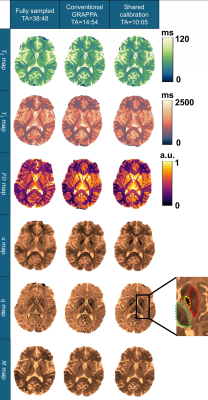 |
Computer Number: 33
1690. Sharing
GRAPPA calibration regions to accelerate quantitative imaging
with phase-cycled bSSFP
B. Acikgoz, Y. Moerlen, N. Plähn, E. Peper, P. Radojewski,
J. Bastiaansen
Inselspital, Bern University Hospital, University of Bern, Bern, Switzerland
Impact: Shared calibration region data across repeated
acquisitions in quantitative parametric mapping sequences,
significantly accelerates quantitative imaging without
compromising image quality.
|
|
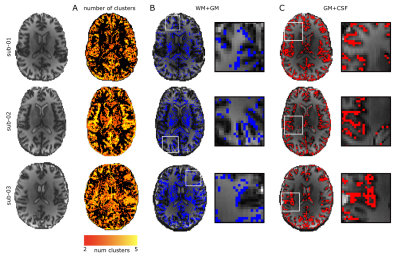 |
Computer Number: 34
1691. Resolving
partial-volume effects in the brain with multidimensional T1xT2
MRI

N. Priovoulos, H. Liu, D. Benjamini, A. Howard, A. Hess,
K. Miller
University of Oxford, Oxford, United Kingdom
Impact: Resolution limits mean that multiple tissue
types are frequently captured within a single MRI voxel. We
demonstrate the ability to separate these compartments with
2D-T1xT2 approaches. Measuring multi-dimensional spectra may
enable better modelling of the biological sources of MRI
contrasts.
|
|
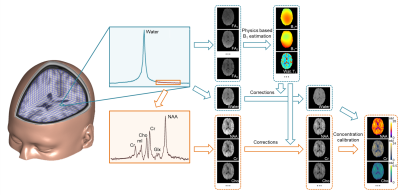 |
Computer Number: 35
1692. B1
Correction of MRSI Data Using Unsuppressed Water Signals

Y. Zhao, Y. Li, R. Guo, W. Jin, B. Sutton, Z. Meng, C.
Xu, W. Zhang, Y. Li, Z-P Liang
University of Illinois at Urbana-Champaign, Champaign, United States
Impact: The proposed method enables quantitative
metabolite concentration estimation, which is robust even in
pathological tissues. This method is expected to enhance the
accuracy, robustness and reproducibility of MRSI
technologies.
|
|
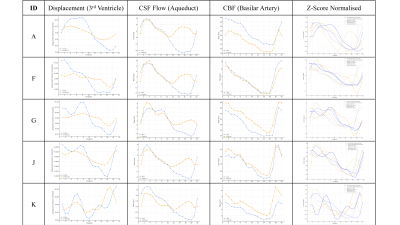 |
Computer Number: 36
1693. Exercise
modulates brain pulsatility: Insights from q-aMRI and MRI-based
flow methods
J. Wright, E. Clarkson, H. Kumar, I. Terem, A.
Sharifzadeh-Kermani, J. McGeown, E. Maunder, P. Condron, G.
Maso-Talou, D. Dubowitz, M. Scadeng, S-J Guild, V. Shim, S.
Holdsworth, E. Kwon
Mātai Medical Research Institute, Gisborne, New Zealand
Impact: This study demonstrates exercise has a
physiological effect on fluid flow and brain displacement.
It highlights q-aMRI’s potential diagnostic applications, as
intracranical dynamics coupling could serve as a potential
biomarker of abnormality, especially in intracranial
pressure and fluid-related disorders.
|
|
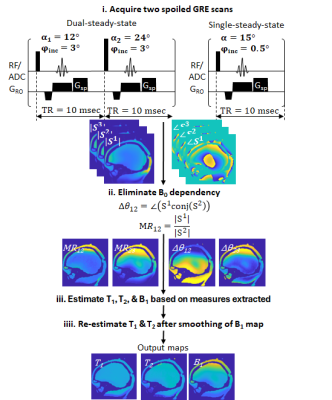 |
Computer Number: 37
1694. Quantitative
T2 and T1 brain mapping based on two fast 3D GRE scans with
single and dual steady-states – a robustness study of human
imaging at 7T MRI
D. Yacobi, R. Schmidt
Weizmann Institute of Science, Rehovot, Israel
Impact: This study introduces a method based on fast
dual-steady-state GRE scan for 7T MRI that simultaneously
estimate T2, T1, and B1. The robustness of the method
in-vivo was assessed.
|
|
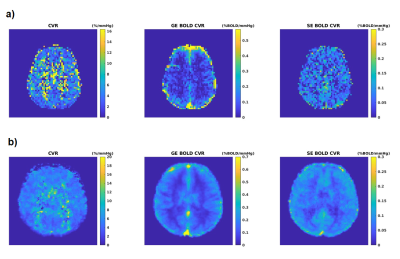 |
Computer Number: 38
1695. Measuring
cerebrovascular reactivity: a comparison of Gradient-Echo and
Spin-Echo BOLD with Arterial Spin Labelling
S. Pomante, F. Fasano, D. Di Censo, S. Censi, F. Graziano,
M. Carriero, E. Bliakharskaia, A. Caporale, E. Biondetti, M.
Germuska, R. Wise, A. M. Chiarelli
University "G. D'Annunzio" of Chieti-Pescara, Chieti, Italy
Impact:
SE BOLD-fMRI may deliver a marker of CVR that resembles the physiological (CBF) CVR more closely than CVR based on GE BOLD, with the advantage of high signal-to-noise ratio compared to ASL. |
|
 |
Computer Number: 39
1696. Rapid
Mapping of Myelin Fraction Using Interleaved Multi-Echo UTE
Acquisitions
J. Athertya, J. Lo, J. Wang, S. H. Shin, A. Suprana, E.
Chang, Y. Ma, J. Du
Department of Radiology, UCSD, San Diego, United States
Impact: The interleaved multi-echo UTE acquisition
scheme allows rapid estimation of myelin fraction, which may
be a useful biomarker to assess demyelination in various
neurodegenerative conditions.
|
|
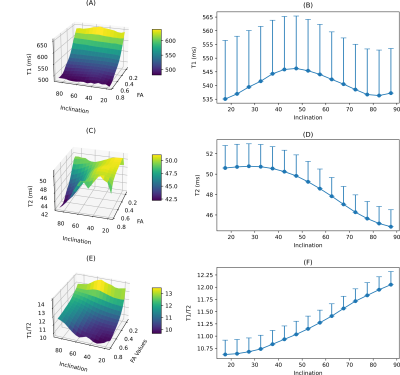 |
Computer Number: 40
1697. Dependency
on Tissue Anisotropy and White Matter Fiber Orientation of
Phase-Cycled bSSFP Relaxometry at 3 Tesla
H. Tesh, F. Birk, S. Klinkowski, S. Brodt, K. Scheffler, R.
Heule
Max Planck Institute for Biological Cybernetics, Tuebingen, Germany
Impact: Relaxation parameters and frequency profile
asymmetries derived from pc-bSSFP demonstrated a distinct
sensitivity to brain tissue microstructure, with a
dependency on white matter fiber orientation and fractional
anisotropy.
|
|
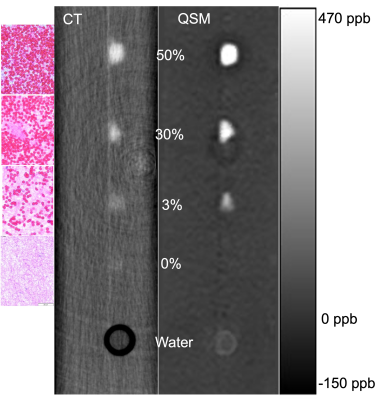 |
Computer Number: 41
1698. Correlation
between clot RBC content and susceptibility measurements on QSM:
an investigation using ex vivo clot analogs
H. Ishimaru, Y. Morofuji, M. Morikawa, A. Ishiyama, C.
Somagawa, T. Nakano, Y. Tasaki, S. Miyazaki, R. Toya
Nagasaki University Graduate School of Biomedical Sciences, Nagasaki, Japan
Impact: A strong positive linear correlation was
observed between the susceptibility values of clots measured
on QSM and RBC content. By measuring the susceptibility
value of clots on QSM, it is possible to estimate the RBC
content in the clots.
|
|
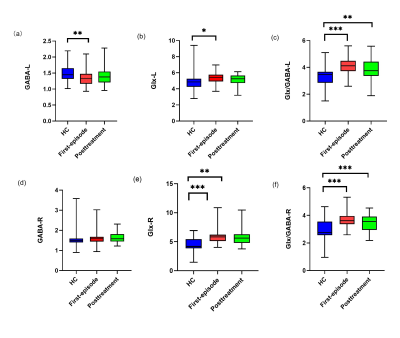 |
Computer Number: 42
1699. MEGA-PRESS
Study of Neurotransmitter Changes and Lateralization in the
DLPFC in rTMS Treatment for First-Episode Adolescent Depression
L. Ma, J. Zhang, Y. Xiong
Lanzhou University Second Hospital, LanZhou, China
Impact: 3-T 1H-MRS
can be used to measure the changes of GABA and Glx
concentrations in patients with depression before and after
rTMS treatment, which provides a theoretical basis for
exploring the occurrence and treatment mechanism of
depression.
|
|
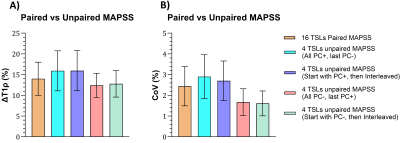 |
Computer Number: 43
1700. Fast
and Reproducible 3D T1ρ Mapping Using Unpaired Phase Cycling and
Optimal Sampling of Spin-Lock Times
S. P. Jogi, Q. Peng, R. Jafari, R. Otazo, C. Wu
Memorial Sloan Kettering Cancer Center, New York, United States
Impact:
3D T1ρ imaging, utilizing optimal spin-lock time (TSL) sampling in combination with unpaired MAPSS, enables rapid and highly reproducible T1ρ measurements. This advancement facilitates longitudinal studies, such as assessing treatment response in radiotherapy. |
|
 |
Computer Number: 44
1701. Simultaneous
1H/23Na MRF in healthy brain aging: Preliminary data
A. Adlung, Z. Pursel, B. Busi, G. Rodriguez, J. Coresh, G.
Madelin
New York University Grossman School of Medicine, New York, United States
Impact: Quantitative sodium imaging in the brain can be
of high interest for investigating healthy aging.
Simultaneous 1H/23Na
MRF enables quantification of sodium and proton MR
parameters. This study provides insights on age-dependent
changes in MR parameters.
|
|
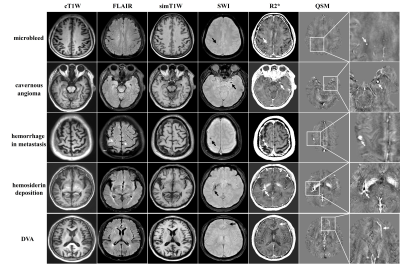 |
Computer Number: 45
1702. Clinical
evaluation of STrategically Acquired Gradient Echo (STAGE)
multi-modal quantitative neuroimaging
Y. Liu, N. He, H. Li, B. Wu, X. Wang, Y. Zhang, S. Ju, F.
Yan, E. Haacke
Ruijin Hospital, Shanghai Jiao Tong University School of Medicine, Shanghai, China
Impact: Multimodal imaging offers the potential to
enhance clinical diagnosis especially for the detection of
venous abnormalities and blood products such as microbleeds
that cannot be detected with conventional clinical spin echo
imaging.
|
|
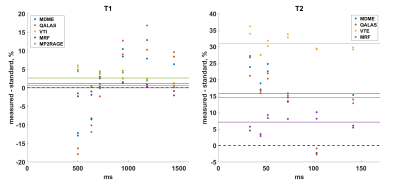 |
Computer Number: 46
1703. Relaxometry
to get the right values, or getting the right data for the
patient: a false dilemma
M. Naeyaert, P. Van Schuerbeek, M. Roose, T. Janssens, H.
Raeymaekers
Universitair Ziekenhuis Brussel, Jette, Belgium
Impact: Currently no simultaneous T1-T2-relaxometry
technique exists which is both accurate in phantoms and
integrated in the clinic. Clinical usefulness, advanced
physical system models, and high-quality phantoms should all
be integrated into the development of quantitative
relaxometry techniques to achieve this.
|
|
 |
Computer Number: 47
1704. Improved
Resolution and Precision of whole-brain multi-parametric qMRI
using Deep Learning Denoising and Super-Resolution
Reconstruction
H. Do, D. Berkeley, P. Kokeny, S. Sethi, M. Fawaz, K.
Ghassaban, W. AlGhuraibawi, B. Tymkiw, J. Ciliberto, K.
Holzberger, M. Kadbi, J. Backstrom, K. Berger
Canon Medical Systems USA, Inc., Tustin, United States
Impact: High-resolution and high-SNR whole-brain qMRI
can be acquired within 5-6min using acceleration and DLR.
qMRI’s qualitative maps and quantitative weightings may be
used for comprehensive evaluation of pathology and
longitudinal follow-up.
|
|
 |
Computer Number: 48
1705. R2*
bias correction in brain multi-echo GRE data
J. Choi, B. Moon, J. Youn, K. Min, C. Oh, J. Kim, T. Kim, J.
Lee
Department of Electrical and Computer Engineering, Seoul National University, Seoul, Korea, Republic of
Impact: Our
method enhances accuracy of R2* mapping by utilizing an
iterative approach which excludes the later echoes with
unreliable signals. By identifying and masking out regions
where correction is ineffective, the approach improves the
precision of R2* values.
|
The International Society for Magnetic Resonance in Medicine is accredited by the Accreditation Council for Continuing Medical Education to provide continuing medical education for physicians.